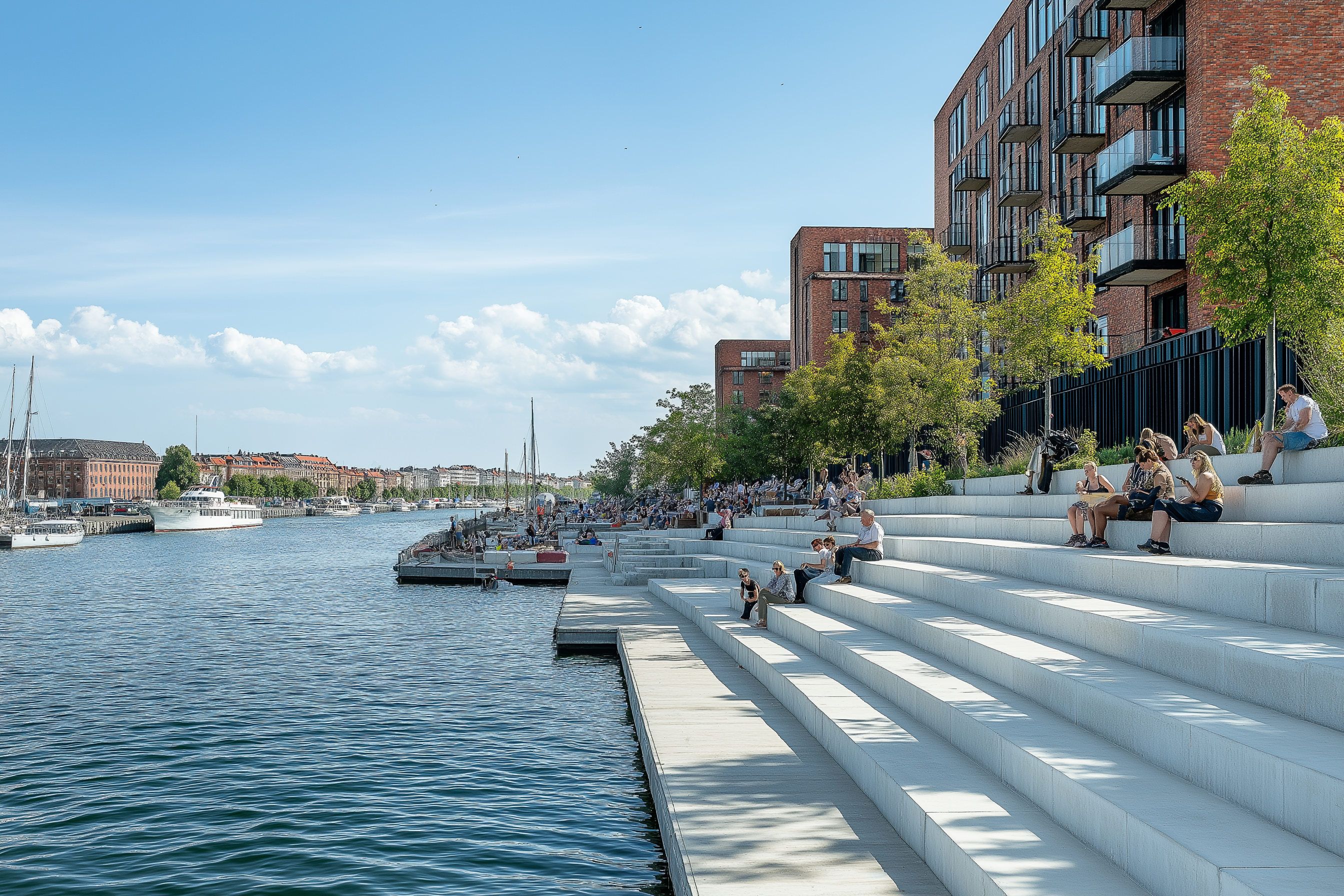
Understanding the topic of Water Sensitive city. Interview with the Ex-ante Assessment expert.

To give potential applicants a clearer understanding of the topic, Birgit Georgi, the EUI External Expert who developed the Ex-Ante Assessment for this partnership, summarises the findings, conclusions, and recommendations of the Ex-Ante report. Birgit is a landscape architect and works with cities and companies to support climate change adaptation and promote sustainable urban growth. The European Urban Initiative invites you to read this article and get inspired to apply for the Water Sensitive City thematic partnership.
What are the challenges European cities face in relation to water?
Birgit: The concept of a Water Sensitive City faces a dual challenge: having both excess water and water scarcity, which can occur within the same city. It's not that one city is only threatened by floods and another by droughts; cities often face both issues, though at different times. This leads to problems with water quality. When excessive floodwater washes pollutants from surfaces into the water supply, it degrades water quality. At the same time, when water is scarce, pollutants in reservoirs become concentrated, causing additional challenges. Climate change exacerbates this by increasing temperatures, which intensifies the water cycle and leads to more extreme weather events, including both floods and droughts.
At the same time, urbanisation has transformed cities. More people are moving into cities, increasing water demand, while urban sprawl continues, even in flood-prone areas. Additionally, more surfaces are paved, reducing the ground’s ability to absorb rainwater. Other sectors, particularly agriculture, also compete for water resources. The state of water infrastructure is another issue; many cities have outdated systems with significant leakages, which they must manage.
Traditionally, water management has focused on supplying water and removing wastewater as quickly as possible. However, this approach is no longer sustainable. What is needed now is a transformation in how water is managed in cities.
What are the opportunities to join the Water Sensitive City Thematic Partnership that European cities can take advantage of?
Creating a Water-Sensitive City—or, as it is sometimes called, a "sponge city"—involves viewing the entire urban area as a system. This requires the involvement of many different sectors and stakeholders, making it a complex and challenging task. Only a few cities are well on their way, though many have implemented individual measures or attempted various approaches. The biggest challenge, however, is not the technical solutions themselves but their implementation—figuring out how to put these solutions into practice.
Therefore, collaborating in a partnership could generate ideas for better implementation and facilitate learning from each other's experiences. At the same time, such partnerships can influence national and European policies, which provide the necessary framework and support (regulations, funding, and supportive policies) for cities. For instance, as the EU begins its next cycle of cohesion policy, which is a crucial funding line, the partnership could play a decisive role in ensuring that these policies are as effective as possible for cities. This presents a significant opportunity.
Are there any synergies between the topic of the new partnership and previous UAEU partnerships?
The Greening Cities partnership is closely related to the new Water Sensitive City partnership as many water-sensitive design measures are nature-based, offering multiple co-benefits due to the significant overlap between the two topics. Additionally, there are other synergies, such as with the Sustainable Tourism partnership, where over-tourism can lead to the over-exploitation of water resources, with the Climate Adaptation partnership, and many others.
What are the top 3 recommendations you proposed in the EAA that future partners will have to address?
First, the solutions exist, and the knowledge is available—so the partners need to figure out why cities are falling behind in implementation. By bringing everything together and developing a more integrated and collaborative approach, we can accelerate sustainable urban development.
Second, for the partnership, it's important to include a variety of partners—not just large cities or those already far ahead in this area. We also need smaller cities, where action is lacking. These cities need to voice how they can be supported, what they require, and what specific barriers they face, which would be incredibly valuable.
Finally, many stakeholders are involved in this issue, such as organizations, urban water authorities, and even universities, all of which could make valuable contributions. However, the most critical partners are the cities themselves, as they are the primary target groups and should be supported by strong national and European frameworks.
The Call for Water Sensitive City thematic partnership is open until the 2nd of October.
To read the full Ex-Ante assessment visit the partnership’s dedicated page.
